Deciding on a destination is easy. Narrowing down an itinerary, on the other hand, is every traveler’s greatest challenge. With so much to see and do, it can be hard to know what to prioritize and easy to bounce between cultural highlights on the tourist circuit, completely forgetting to factor in the great outdoors. Adding a healthy dose of nature is bound to improve any itinerary, and hiking is among the easiest to organize, most approachable, and thoroughly rewarding ways to make it happen. Here are nine reasons to include at least one hike on every trip you take, no matter what hemisphere you set your sights on.
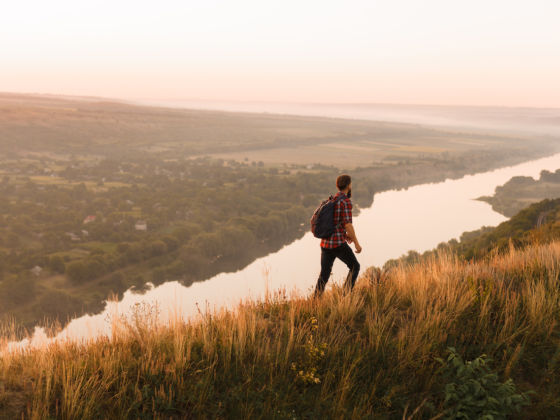

1. You can hike just about anywhere…

Photo: Happy Auer/Shutterstock
Few outdoor activities are as universally accessible as hiking. No use bringing your scuba gear on that American Southwest road trip or schlepping your skis all the way to West Africa. You should, however, remember to pack hiking boots for both locales — as well as pretty much anywhere else. Trails exist on every continent, in every country, and outside many major cities. It’s often possible to hike year-round, and even in places where temperatures drop below freezing, snowshoes can help hikers hit the trails anyway. Do a little research in advance of your trip or poll a few locals upon arrival to find the best trails around — it’s guaranteed they’re out there.
2. …with very little gear.
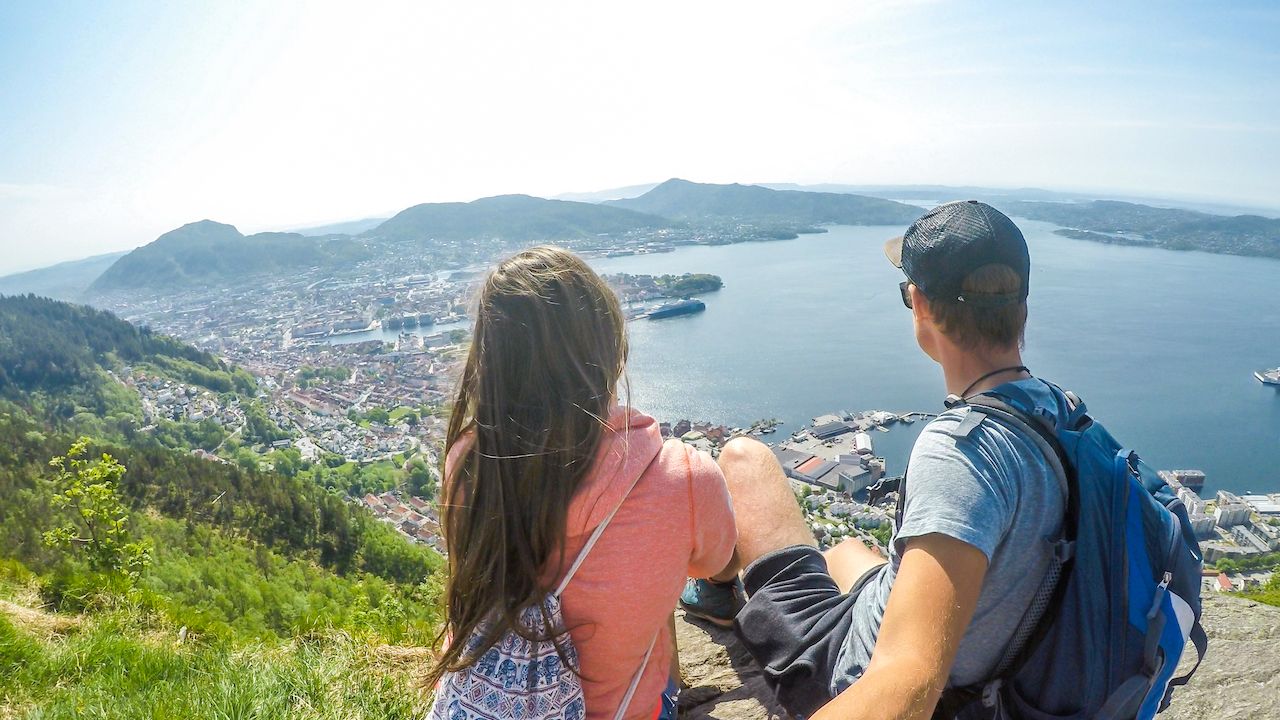
Photo: Christopher Moswitzer/Shutterstock
Speaking of hiking boots, it doesn’t take much more to be prepared for a day hike. Hikers should always carry plenty of water, sunscreen, and weather-appropriate attire. Snacks like trail mix, or gorp as hikers say, are also essential for keeping your energy up on longer hikes. The most prepared hikers might also bring a first-aid kit, compass, or other basic tools, but even then, everything you need should fit nicely into an easy-to-carry pack. Naturally, long-distance hikes require more gear and planning, but it doesn’t take much to enjoy the average foray into nature.
3. History exists outside of museums.
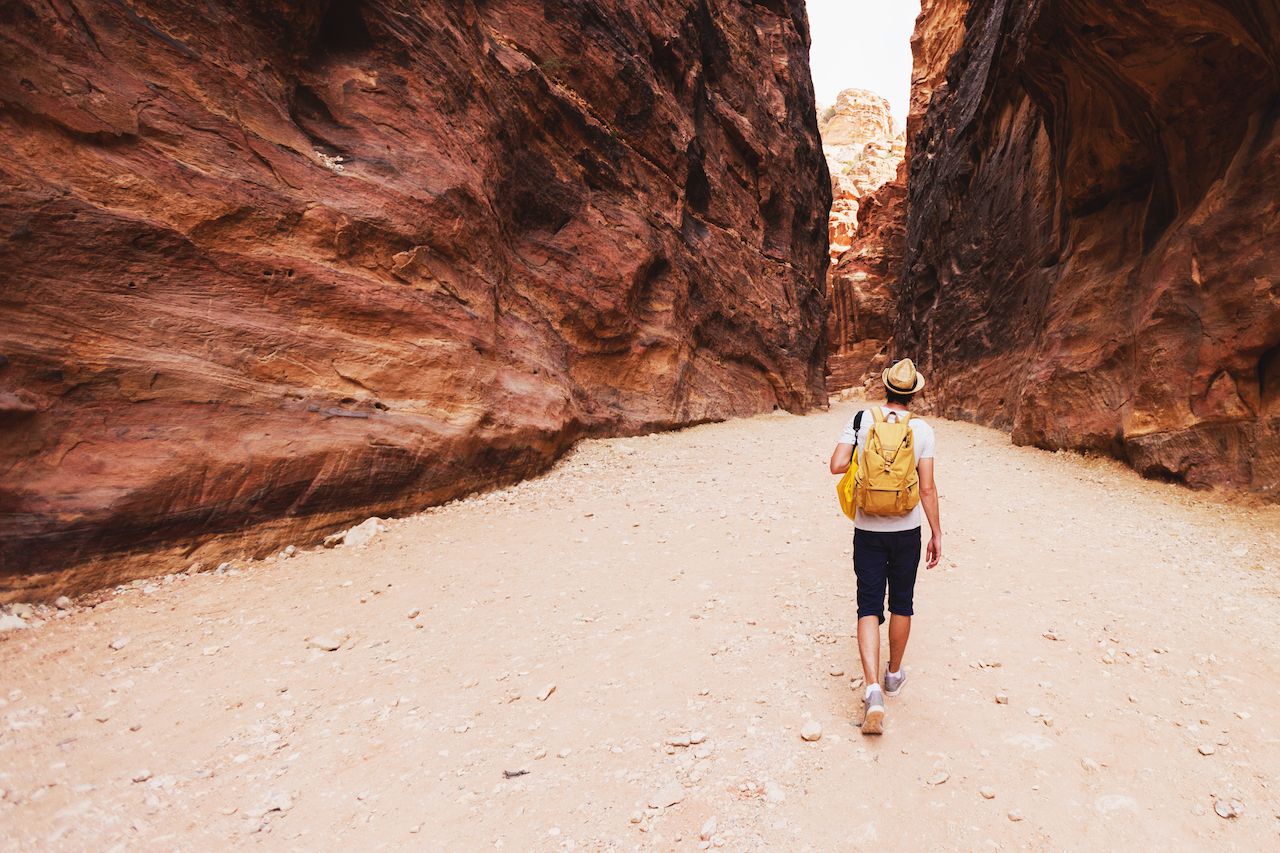
Photo: Svitlana Sokolova/Shutterstock
It’s easy to class hiking as an outdoor activity without much cultural value, but the natural landscape reflects a destination’s heritage just as much as its art, architecture, and artifacts. Across the world, historic pilgrimage routes like Spain’s Camino de Santiago and Japan’s Kumano Kodo invite hikers to participate in rites of passage that have existed for centuries, millennia even, soaking up relics of human history along the way.
Other trails, like the Alexander MacKenzie Heritage Trail in British Columbia, trace trade routes established by traditional landowners. Some wind around archaeological sites like Petra’s rock-hewn tombs and temples, and others showcase life that predates human activity, like Yosemite’s ancient sequoia groves. Not all hikes promise access to UNESCO heritage sites, but many offer a way of engaging with the local history and culture that doesn’t require being cooped up indoors or confined within city limits — though we’re certainly down with urban hiking, too.
4. It’s an education in biodiversity.

Photo: LouieLea/Shutterstock
You don’t need to go on safari to find fascinating wildlife. Every natural setting has its own network of flora and fauna, whether it houses big cats or tiny critters, towering trees or carpets of shrubbery. To make the most of a hike in unfamiliar territory, invest in a guidebook before setting out and try to identify the native, or invasive, species that thrive in the area you’re exploring. You might just end up an expert in wildflowers or discover a passion for birdwatching you never knew you had.
5. It’s generally free.

Photo: Naruedom Yaempongsa/Shutterstock
Certain national parks and outdoor recreation areas charge entrance fees. This includes some of the most coveted, like Yellowstone and Torres del Paine, but it hardly applies to the majority of the world’s hikeable areas. Local trails are generally open to the public free of charge, making hiking one of the few things to do abroad that won’t make you regret checking your bank balance at the end of the travel day. Next time you blow your whole vacation budget on souvenirs or upmarket meals within the first few days of your trip, balance it with hiking excursions that won’t cost you a dime — or at least not more than the price of an energy bar.
6. No experience necessary.

Photo: Monkey Business Images/Shutterstock
Unlike rock climbing or scuba diving, hiking doesn’t require any training, certifications, or even much technical ability. Stamina and a basic fitness level, yes, but trails vary greatly in difficulty, and different routes can accommodate outdoorsy types of various ages and experience levels. This makes hiking an excellent group activity or family outing, assuming the little ones are small enough to carry with relative ease or big enough to finish the hike on their own two feet. Pick the right route for your group, and always come prepared with the basics, but breathe easy knowing hiking is just like walking with a little oomph and some spectacular eye candy.
7. Exercise is a mood booster.
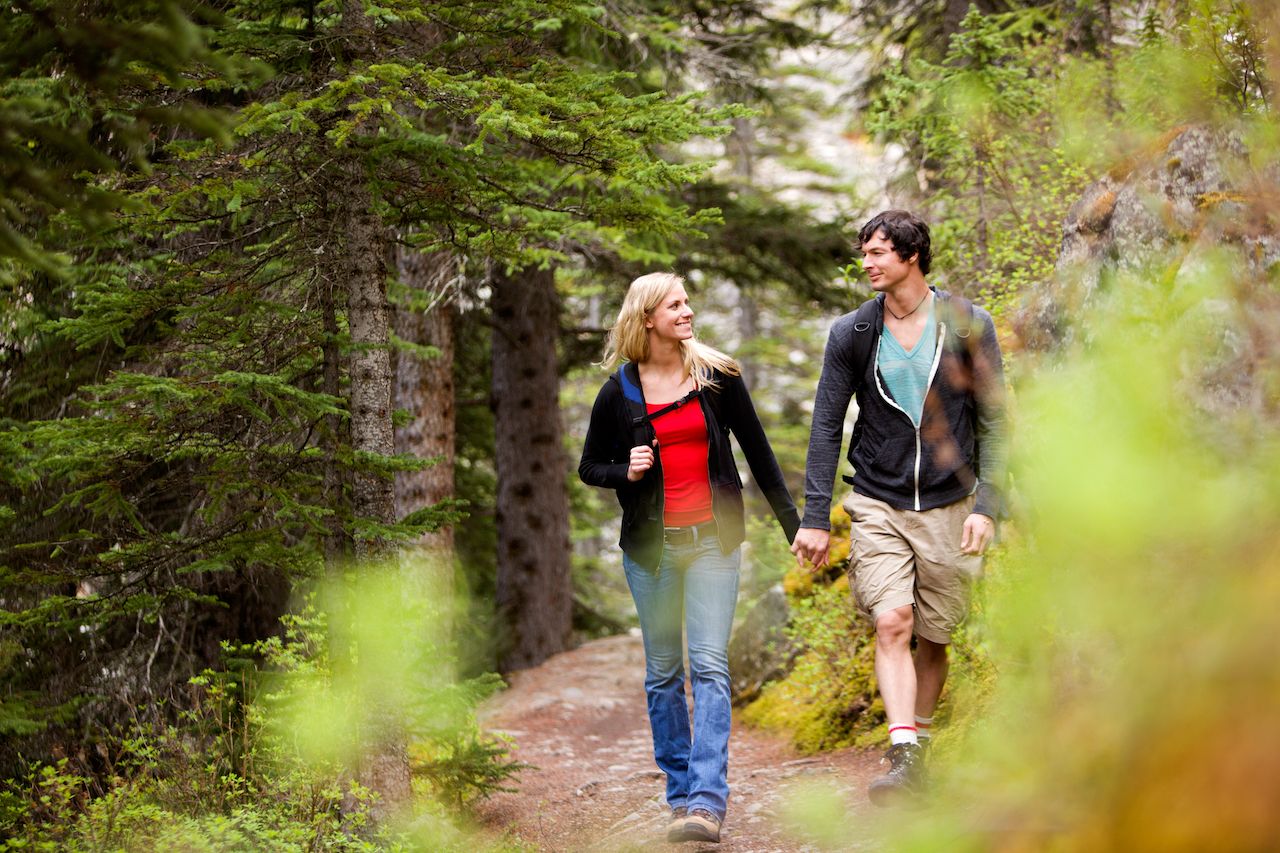
Photo: Tyler Olson/Shutterstock
All trips come with stress. Maybe the airline loses your luggage or the “charming, central” Airbnb you booked is a glorified storage unit located smack dab on the outskirts of town. Maybe a vendor tries to hawk his souvenirs a little too aggressively — at a wildly inflated tourist price, no less — or just being away from your normal routine proves taxing. Even trips that go off without a hitch don’t exempt us from slipping into a sour mood, but thankfully, hiking is there to help. Exercise, in general, is an excellent way to stay happy and healthy both at home and abroad, but all that fresh air is particularly motivating when you’re hiking in a new place.
8. It can even help with jet lag.

Photo: marvent/Shutterstock
Hiking is both energizing and exhausting — a paradox travelers can hack to their advantage. A well-timed hike can give you just the jolt of energy you need to combat that midday slump and keep you awake until a more appropriate bedtime than lunch. Hiking will also tire you out, however, so it’s not a bad strategy for adjusting to the time change if you slept straight through morning but want to wake up in time for at least one traditional breakfast. Beyond being fun, fulfilling, and a great way to get to know a destination, hiking might even ease you into the time zone and help you better enjoy all those other activities on your itinerary, as well.
9. The views are unbeatable.
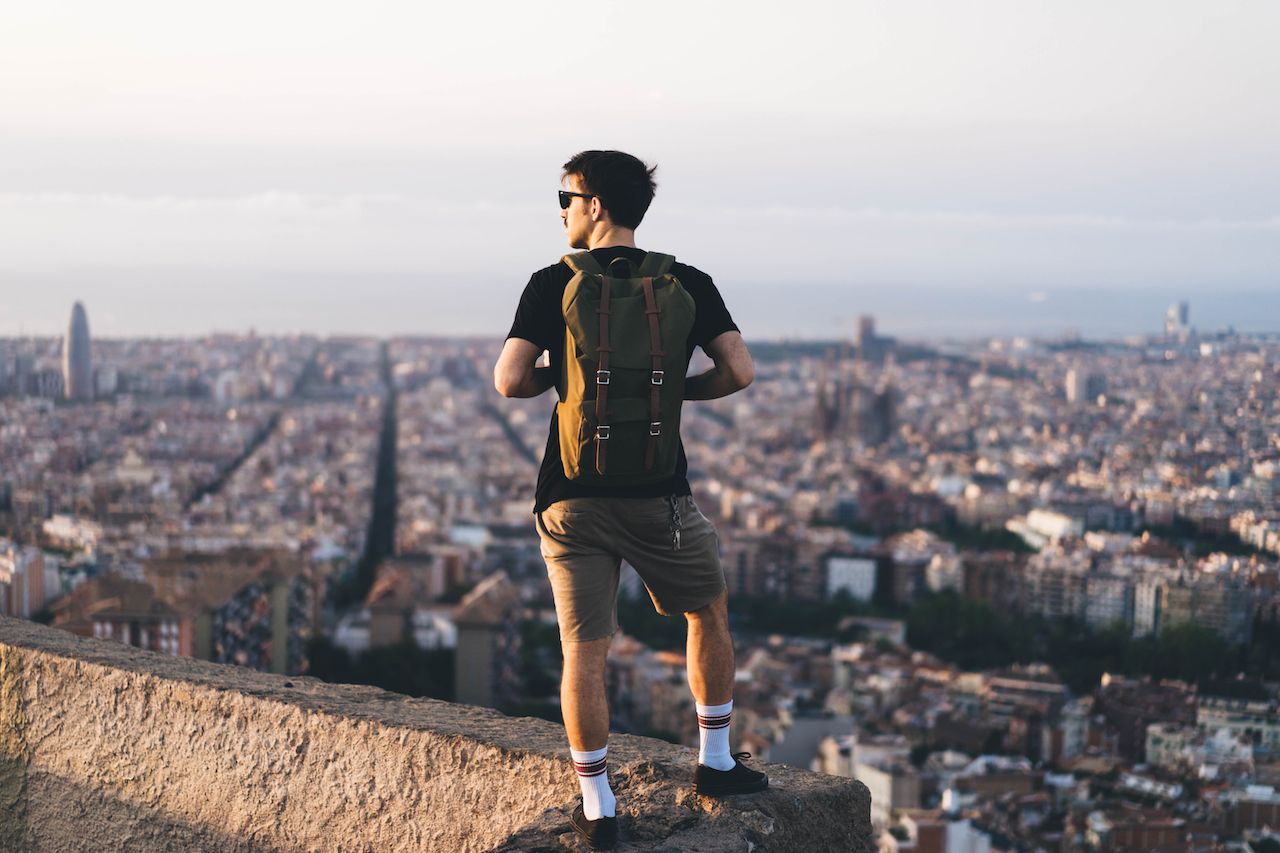
Photo: katiaishere/Shutterstock
There are any number of ways to see a destination, be it navigating narrow city streets on foot or snaking through the countryside on a scenic drive. Hiking, however, often yields vantage points with the widest, most breathtaking panoramas of the surrounding landscape. Take a city like Barcelona, where a stroll down La Rambla is a sensory snapshot into daily life, but a walk along the Carretera de les Aigüas under Tibidabo gives you non-stop views over the entire city, with the sea beyond. Of course, not all trails gain much elevation, and plenty weave through areas with thick tree coverage. But even if your hike doesn’t end in sweeping vistas, it will have some killer scenery, and definitely peace and quiet.